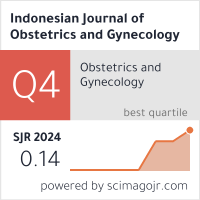Current Trends in Contraceptive Use and Fertility Concerns Among Women of Reproductive Age in Indonesia
Abstract
Abstract
Background
Family planning remains a key intervention in reducing maternal mortality and creating prosperous families. Assessing the unmet need for family planning allows insight into the progress of family planning programs. On the other hand, there has been much less attention given to the declining fertility rate in Indonesia. To address both the unmet need and declining fertility rate in Indonesia, this study aimed to investigate the most recent trends in contraceptive use in Indonesia as well as evaluate fertility concerns and access to reproductive healthcare service.
Methods
Women of reproductive age in Indonesia were asked to fill in an online questionnaire. They were asked about sociodemographic characteristics, marital status, pregnancy history, perception towards fertility, and access to healthcare service and information. Descriptive statistics and independent t-test were performed.
Results
Of 370 women, more than half (57.8%) had used some form of contraception. The most frequently used contraceptive method was natural family planning (30.3%), followed by condom (20%). Women with no prior sexual history, had never been pregnant before, and had not been married cared more about having a child in the future. Internet and social media represented the most popular information source for family planning.
Conclusions
Many Indonesian women still prefer traditional contraceptive methods over the more effective modern contraceptive methods. Numerous socio-cultural factors are likely to influence the behaviour of reproductive-age women regarding contraceptive use and childbearing in the future. More effort should be put into raising awareness about modern contraceptive methods and addressing fertility concerns.
Keywords: contraception; fertility; family planning; awareness; reproduction
Downloads
Copyright (c) 2025 Indonesian Journal of Obstetrics and Gynecology

This work is licensed under a Creative Commons Attribution-NonCommercial-ShareAlike 4.0 International License.













